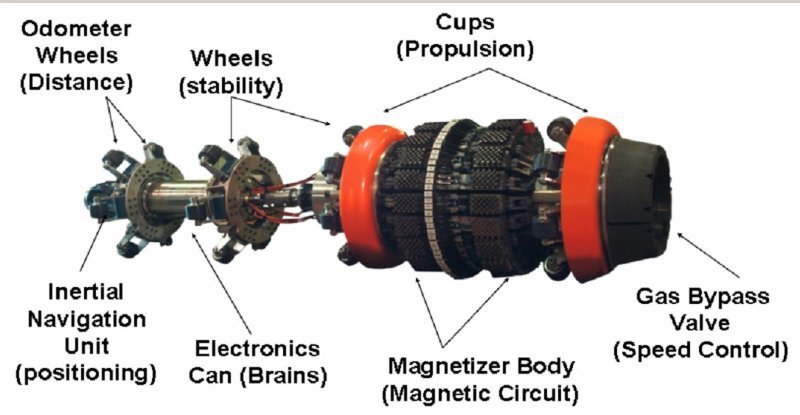No LP required IMO. It is well known in the industry that corrosion is by far the #1 cause of all leaks and third party activities cause the most property damage and loss of life.
1.) Pipelines are already installing the components necessary to use the inspection pigs LI pictured above in all new regulated pipelines and over the next 20 years or so for old pipelines.
2.) There are One Call programs operating in every state that contractors should call before digging. More could always be done to educate contractors, as that is critical and ... a never ending battle.
3.) A regulation requiring excess flow shutoff valves is being contemplated, but they won't activate until after a break or leak occurs.
4.) A new federal regulation to extend regulatory authority to include a number of rural and some other pipelines that have not been previously regulated is being contemplated. Pipeline companies and
trade lobbyist organizations have commented during the regulatory process that they are against this provision. That is not surprising, especially given the current political climate. Yet they were not anywhere to be seen when this
Plains All American Pipeline Co pipeline leaked 140,000 gal. That pipeline is offshore, yet in state waters and apparently not included within the federal regulatory program, falling into a regulatory black hole between federal and state waters. Recently sold between two companies, neither one apparently knowing what its operational state was at the time and eventually finding out the hard way that it was actually pretty damn poor.
2015 California offshore pipeline leak
I think that public opinion is so bad at the moment that, no matter what the cost, certain things will have to change. Frankly most pipeline companies are great money makers and can afford to play the game no matter what the house rules are, so drain the swamp, build some safe pipelines and pump out what's left.
What I would like to know...
Is it my imagination, or does the rest of the world's pipelines appear to be safer. Is it that the USA simply has so many more pipelines? I don't think for the most part there is any essential differences in design. Codes are the same ASME as the US, nearly exact copies, or very similar. So, for example, are European pipelines constructed better? Operated better? Inspected better? Maintained better. All the above, or is it just my imagination.
Technology is stealing American jobs. Stop visas for robots.

